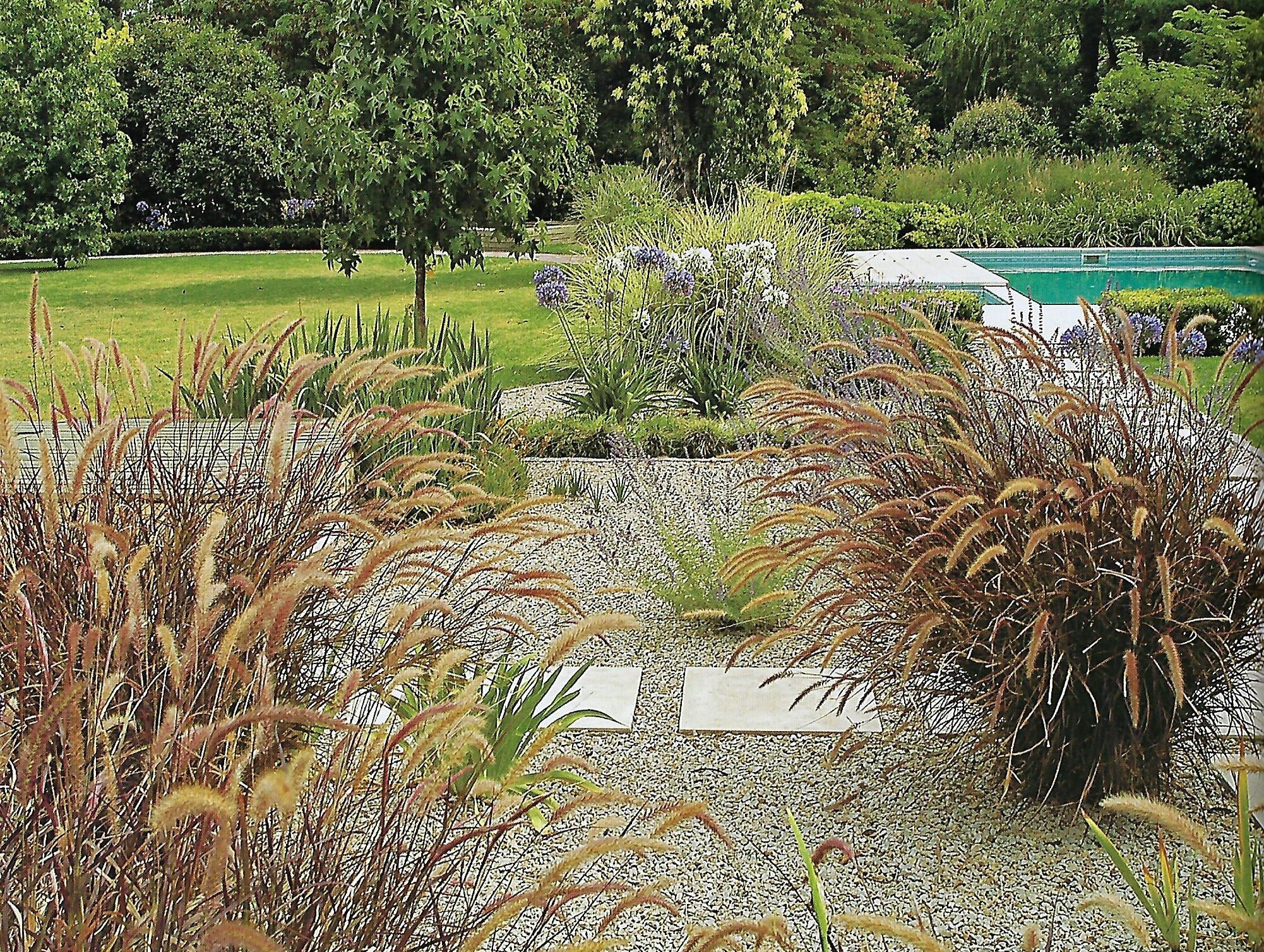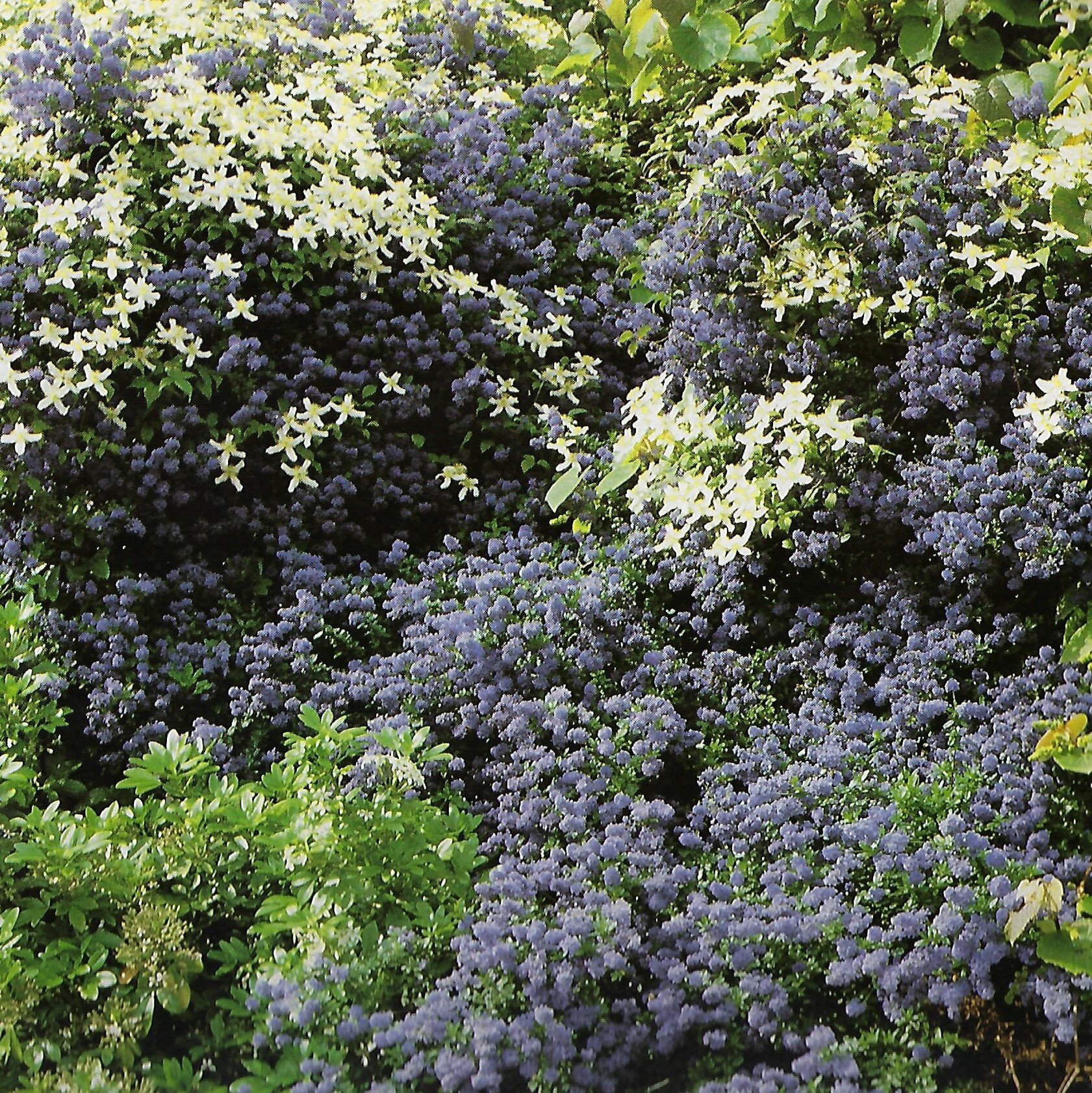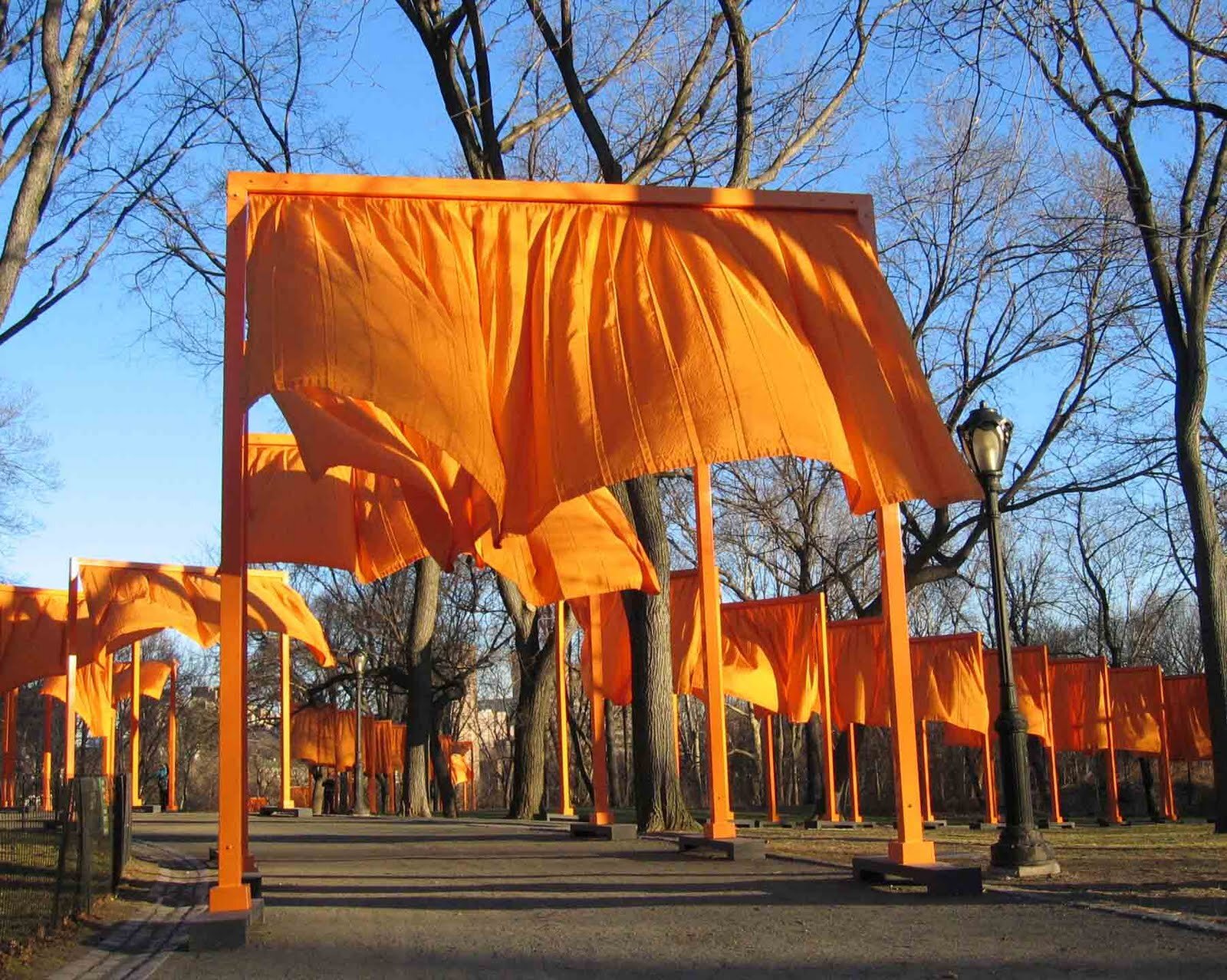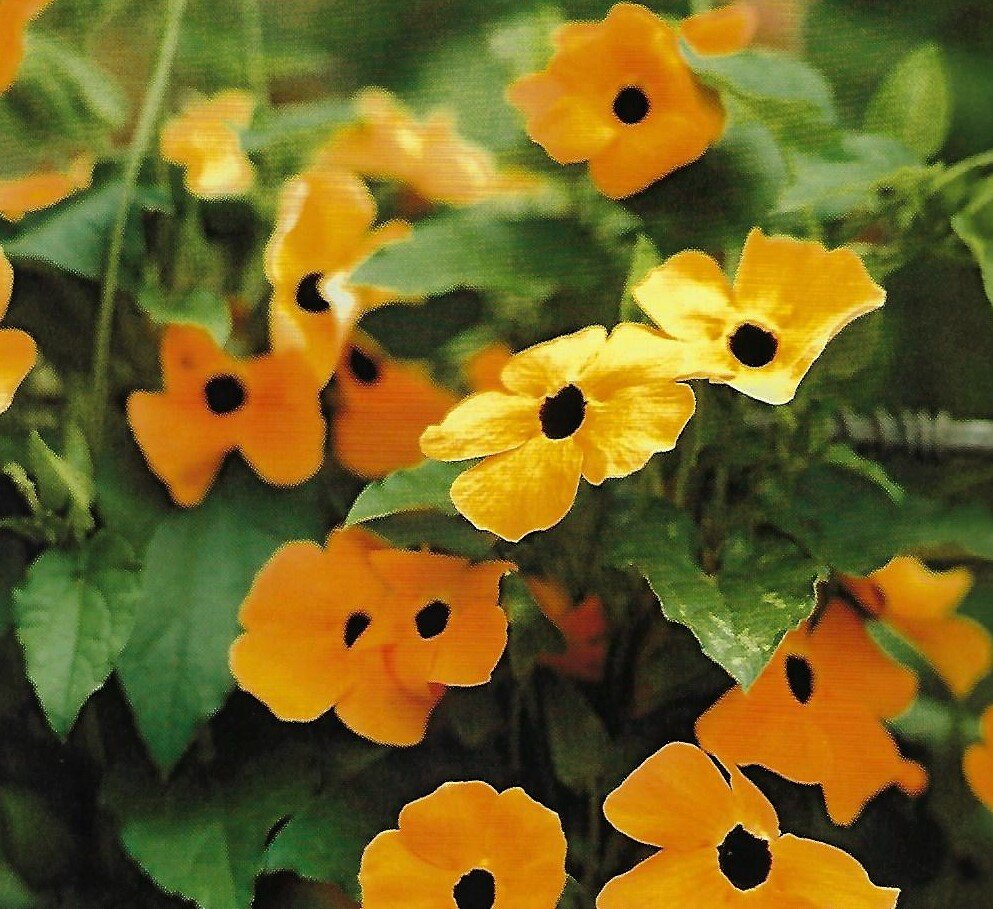Fixes for this Year’s Home Landscape
Robin Schachat
This is the time of year we all step outside and raise an eyebrow at our brown landscapes and say to ourselves “Really? Really? I thought I had such a nice garden, but right now it looks like the dog’s dinner.” Daffodils, forsythia, a few early tulips, two foot high shoots of peonies topped with a tiny cluster of emergent leaves – and blank soil. We forget how full and blowsy the asters looked in September, punctuated by brilliant outbursts of dahlias, and we think that we have somehow missed a season that ought to be explosively pretty.
Probably in fact we have missed two – think about how the garden looked in January. Oops.
Well, time enough to worry about the big picture after New Year’s. That’s the season for re-imagining, for placing a pond in your mind’s eye, for planting a hedge and border to hide the sad-looking winter pool and its sagging tarpaulin cover, for laying out the paddle tennis court, for creating the terraced spaces where your daughter (now 15) will want to be married. These are the true backbones of landscape design. But that’s for later. For now, let’s consider how to augment our existing garden spaces so that we can enjoy the garden we already have through all of the immediate upcoming outdoor seasons.
There are a few basic tenets of all landscape design, and we will apply some of these when it comes to refreshing our perennial and shrub gardens. Balance. Rhythm. Repetition. Color theory. Layering. Punctuation. And always plant the right plant in the right place. These basics apply regardless of whether the garden is designed as formal, matched borders (1) or to feature wide wild vistas (2); whether the garden is a small, private city space behind a townhouse (3) or it frames a play area for an active family (4).
Balance. Well, sometimes it’s obvious. If any of us were lucky enough to inherit or adopt a magnificent symmetric garden by a great garden designer – and one or two of us in the club have in fact been so lucky – we would know that the overpowering symmetry of the garden’s form dictates a certain balanced style. Ask Clara Rankin; she knows this well. But even within the formally balanced structure of the parterres that thrived in her excellent care for decades, the aging of the plants and the changes of overhead shade dictated modifications; some areas were successful in their original bursts of sunny perennials, and over time others required that the sun-loving plants must be replaced by shady ground covers. It’s the nature of a garden, after all: things grow, and die, and the garden changes.
Most of us in modern American gardens are not lucky enough to have such a design in place, and perhaps we would not want one. With multiple young children or boisterous Labradors, we might instead prefer dirt-biking paths or open, unimpeded lawns. Retired into a small townhouse, we might want no more than a sunny place to sit and a few herbs to clip. But we all need balance. A backyard embraced on the right by copses of trees that embrace a lawn calls out for something on the left, which might be a wall or a trio of towering oaks, or a greenhouse or a view of Lake Erie off a bluff, or whatever, but those copses need to be balanced by a reasonably weighty moment at the opposite side. In the same way, all gardens require internal balance.
Consider a yellow border that is brilliant all summer, and in fall with sunflowers and asters (5). What if in spring the portion near the house were full of Virginia bluebells and pink poppies, but the far portion was merely blank soil? This would not satisfy the viewer; it just feels wrong. How to do a quick fix? You could plop a sculpture, a big rock, a large spring-flowering house plant in a pot out in the far portion, couldn’t you (6)? Voila: balance. Or a cluster of pots of bulbs, spring ephemerals overplanted with daffodils and tulips (7)? That works. And it’s easy. It balances the emptiness for now, and come the fall – which is for most (but not all) plants the superior planting season, you could make a more permanent change.
Rhythm. The eye likes to be drawn, to be guided, to find logic in the beauty of a garden. If all of the plants in a border are spikey, there is a porcupine shiver of discomfort. If all are the same color of deep red year-round, it can be very impressive as a feat of planting design but it’s not pleasing to observe (8 and 9). A long, straight-sided border of English ivy cries out for changes.
I am, myself, a plant collector. I will often plug “one of those and three of these” willy-nilly into a location with (I hope) appropriate soil and light conditions just to see if I can make them thrive. But a garden tossed together according to that formula is equally unpleasant. There is no calm or beauty when plants are combined without an eye to underlying logic or flow. If, like me, you have a collector’s hodge-podge border, you’ll want to reconsider its shape and planting in fall and winter. But for now? There is an easy trick: give it rhythm. Punctuate it periodically with plants of similar color (10), or plants of similar form, or objects that draw the eye and give it regular, repeated spots to rest and be calm.
If your border suddenly sprouts a fluid ribbon of lambs’ ears weaving through all the rest, there is a calming flow for the eye to follow. If you add 20” blue-colored pots (11), each inhabited by bright, tallish annuals or houseplants at regular intervals, you will have a very different look, but one equally restful to the eye. If you widen the border and give it a serpentine edge of uniform ground covers (12), it will suddenly seem more reasonable (but it will still at heart be a hodge-podge that needs fixing in future). What about a gentle curve defined by a variety of obelisks planted with easy annual vines – those not only create rhythm and flow, but also draw the eye upward for another dimension. Ta-Da! A quick fix. Just remember to rethink the long-term planting later.
Repetition. This is very closely related to rhythm, you will note. What if those pretty blue-glazed pots in the last paragraph were all planted with brilliant yellow daffodils, then later with viridiflora tulips, and then in summer with blowsy hydrangeas in a similar bright blue? In that case your hodge-podge would suddenly seem sensible in multiple seasons! If your obelisks were each 8’ tall and planted with pink roses and white clematis twined together, the border would be stunning – assuming your hodge-podge were color-blended appropriately.
But there are other, less visually insistent ways to use rhythm, although most of these require more physical work. Related shrubs can be introduced at intervals to draw the eye. Perennial colors can be transplanted to draw the eye. Consider some of Gertrude Jeckyll’s most striking garden borders, where she brought borders from pastel colors to hot colors and then back again (13): she was successful by creating, with varying perennials and varying cultivars of the same perennials, a rhythmic repetition of plant forms. That’s a tremendously fun exercise, very satisfying when you achieve it, I can say from experience, but it’s not easy.
And in modern garden design there are very successful new ways to create rhythm Think of Christo and Jean-Claude’s “The Gates” in Central Park (14). Wow. But we don’t all have Central Park to play with, even just for a one-year temporary effect. Here is another example on a smaller sale, by the famed designer Martha Schwartz (15). Clearly, temporary fixes for your garden need not demand lots of transplanting and hole-digging. Just recall that ideas like these are temporary ideas. They are for a season, unlikely to satisfy you and your family in the long term. Back to the drawing board in winter.
Color. I shall now insert a plug for one of the classic garden design books, Color in Your Garden, by Penelope Hobhouse. In the late twentieth century, a number of wonderful British garden designers published excellent theory and design texts. Hobhouse was one of them, and this book is one of her finest.
Every gardener has her (or his) own preferences when it comes to the use of color in the garden. Many try to emulate the White Garden at Sissinghurst (16), designed by Vita Sackville-West and Harold Nicolson. Many choose to work with all pastels, or to create “hot-toned” or cool gardens, or gardens that rely on tones of green, with variation rising primarily from variegated foliage or unusual textures. If you are among these people, you don’t need to think about “fixing” your garden with color; you are way ahead of this article. If you’re dissatisfied with what you have done, at the worst you may need to mix in a few other seasons of flowers within your color blend, or to toss in an unexpected textural plant, and you know how to do it.
On the other hand, if you know you need a fix but you have no firm color structure pre-existing in your garden, this is the time to enforce a color plan. An obvious use of color would be to create rhythm, or to repeat a theme. But you can make a “blah” garden of ups and downs much happier by introducing color shifting with seasons. For example, if your March/April garden relies on daffodils and forsythia, and your June garden relies on pink roses, add some coral- and peach-toned early-blooming annuals like wallflowers to carry your spring tones into the pre-existing pink/mauve/rose colored early summer palette. Then you could heat up that pinky early summer by inserting some annuals like Nasturtiums along the edges of the beds (17) and some coral or orange dahlias in mid-bed to carry the high summer soft tones into the hotter yellows and reds of late summer and the rust tones of fall (18). If you don’t want to dig holes, just plop potted dahlias in place – no one will see a pot under exuberant September foliage! This way your garden will never appear to have “dead seasons” between its grand moments. A masterful example of this seasonal color blending is to be found in the garden borders in front of Monet’s house at Giverny. One or two photos won’t do it. You’ll need to see photos of the garden throughout the year to get the full impact. I suggest you look into Monet’s Garden: Through the Seasons at Giverny by Vivian Russell.
Layering.
By layering I mean underplanting and overplanting your existing plants, and truly that is best done as part of a permanent plan. For example, to enliven spring, scatter late winter ephemerals like bright yellow Eranthis or soft purple Crocus tomassianus (the squirrels don’t bother this variety) in your lawn. They won’t be hurt by late snows, and will give you a welcome entry to spring. Further early exuberance might come from a mass of snowdrops, whether in the lawn or in your borders (19); their foliage will disappear as late spring and early summer perennials break ground around them. If, as in the Color section, your March/April garden relies on daffodils and forsythia, try underplanting the daffodils with what are known as minor bulbs. You might use Scilla, crocuses, Grecian windflowers, Chionodoxa, and Muscari to create a three month long field of blue beneath the daffs (20). After the minors have gone dormant and just as the daffodil foliage fades, the daylilies you have liberally planted over top all begin to come into bloom. Make sure they are re-bloomers – Cynthia Druckenbrod is your expert source. No dead seasons here!
Conversely, for extra autumn color when your perennials begin to fade, underplant with fall ephemeral bulbs like Sternbergia lutea in screaming bright yellow, Colchicums in bright pinks and waterlily lavenders (thanks to our member Anne Ginn for mine), or autumn crocuses in all their tones of purple. Taller autumn-blooming bulbs that will pop up unexpectedly through the fading foliage of your perennials include explosive Naked Ladies (21) and their cousins of the Lycoris family, and the very late members of the Allium family. I am particularly fond of garlic chives, Allium tuberosum, which proliferate to create clouds of white just when everyone else is shrugging their tired shoulders and the mums are not yet in full gear. These fall bulbs should be planted NOW, in the spring.
And don’t forget to drop in those dahlias late in the spring for fullness in fall. Dahlias range in height from one to five feet (or you could try a tree dahlia, but frost will likely catch it just as it begins to bloom, here in Northeast Ohio – voice of experience). Dahlia blooms range in size from an inch to a foot across. Their colors range from white to almost-black. There is no excuse for having blank spots in the September garden; we have dahlias. Start them now, or a few weeks ago, inside.
What about flowers above your current garden’s level? Bring the eye upward! There are many attractive annual vines you could try, that will give you a bright color within a season, and of course if you are ready to commit to something permanent there are many wonderful perennial options. But annuals on obelisks (22), on arbors, on pergolas, on trellises propped against sheds and garages, or on the bones of spring-blooming shrubbery will give your summer garden an extra layer by lifting it upward. Then if you decide you want to repeat the effect next year, you could choose a perennial vine, or a different color annual (23). Hanging baskets from tree limbs and shepherd’s crooks are always welcome, so long as you remember to water them, and many can be overwintered indoors and return to the garden next year (24).
Punctuation. All good gardens rely on focal points, those moments when your eye finds a focus on which to rest. Formal gardens in the European traditions, especially, are often built around allees that terminate in sculptural focal points (25).
But in less formal gardens, those focal points may pop up in unexpected places, and they may be created from less formal materials. Often, in small residential American gardens, they are simply surprising, unexpected plants. To see a terrific example of this, drive by our member Margaret Ransohoff’s garden in the summer. At the right of her driveway is a beautiful, banked perennial garden planted primarily in Margaret’s striking color palette of corals and deep blues and purples – she is a master plant colorist, by the way, and we could all learn from her. And suddenly, rising above the jewel-toned masses of traditional perennials, erupts a silver-blue mass of sculptural, architectural foliage, a cardoon (26). It’s an annual here (although Margaret’s has been known sometimes to over-winter). Buy a seedling from a local garden center, and you can do that, too.
You may even have a house plant that will achieve this purpose for you if you bring it outside for the summer. This works best with striking plants, of course: a purple-tinged banana tree (27)? Note in this case the gardener has actually used them in repetition through her groundcover to enforce rhythmic motion. Instead of plopping the pot down on the terrace near the door, put it in the wheelbarrow and roll it out to a target in the garden and just put the pot in place. Instant focal point!
Speaking of instant quick fix focal points – how about that wheelbarrow (28)?
And Always, Right Plant in the Right Place.
If you are moving potted plants around to create color, volume, or surprise in your garden, all you need to worry about is the light. A plant that needs full sunlight needs full sunlight (29). Period. Full shade plants need full shade (30). But drainage is a matter of the soil in and holes at the base of your pots. Irrigation is a matter of watering your potted plant. That part is easy.
Most plants in soil enjoy what landscape professionals call MWD. Moist, well-drained soil. But pay attention: some don’t. If you are planting a cactus for a summer exclamation point, for heaven’s sake don’t plant it in a damp spot, or your garden will look worse that it did before. If you are planting Elephants Ears (31), on the other hand, make sure that soil is very damp, all the time. If you want Nasturtiums to sprawl across the edges of your path like Monet, remember that they want sun – and you want to plant the trailing varieties if you want true sprawl. If you are relying on variegated Caladiums to give you cool white accents in a dim spot in the garden (32), remember that they require shade.
In short, just because you are using temporary plants to fill up a one or two or even three season empty blotch in your garden, you must always give the plant what it needs. Otherwise you are back where you started – with a brown, empty spot. Don’t let that happen to you!































